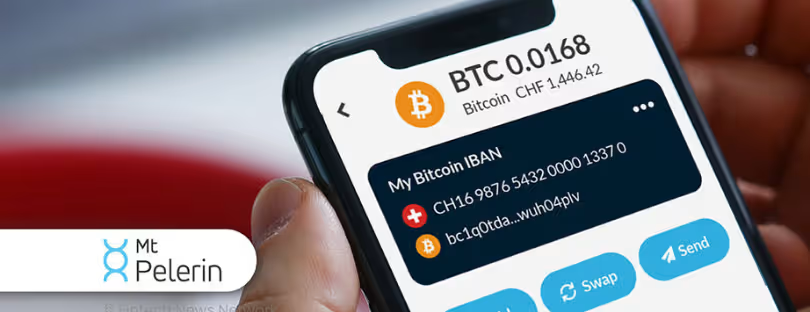
Global Public Safety LTE/5G Spending Tops $5.7B by 2026
In a recent report by SNS Telecom & IT, projections indicate a soaring trajectory in annual spending on public safety LTE/5G network infrastructure and devices, surpassing $5.7 billion worldwide by the close of 2026. Global Public Safety LTE/5G
Annual investments in public safety LTE/5G infrastructure and devices will reach $4.3 billion by the end of 2023. The market is projected to grow at a CAGR of 10 percent between 2023 and 2026.
Global Progress: Public Safety Networks Worldwide – Advances, Challenges, and Future Plans Global Public Safety LTE/5G
The FirstNet (First Responder Network) and South Korea’s Safe-Net (National Disaster Safety Communications Network) public safety broadband networks have been implemented.
Britain’s ESN (Emergency Services Network) project has been hampered by a series of delays.
National-level programs—New Zealand’s NGCC (Next-Generation Critical Communications) public safety network, France’s RRF (Radio Network of the Future), Italy’s public safety LTE service, Spain’s SIRDEE mission-critical broadband network, Finland’s VIRVE 2.0 broadband service, Sweden’s Rakel G2 secure broadband system, and Hungary’s EDR 2.0/3.0 broadband network—have made considerable headway in moving from field trials to wider-scale deployments.
Nationwide initiatives in the pre-operational phase include Switzerland’s MSK (Secure Mobile Broadband Communications) system, Norway’s Nytt Nodnett, Germany’s planned hybrid broadband network for BOS (German Public Safety Organizations), the Netherlands’ NOOVA (National Public Order & Security Architecture) program, Japan’s PS-LTE (Public Safety LTE) project, Australia’s PSMB (Public Safety Mobile Broadband) program, and Canada’s national PSBN (Public Safety Broadband Network) initiative.
 AT&T Confirms Successful Completion of Public Safety Broadband Network FirstNet
AT&T Confirms Successful Completion of Public Safety Broadband Network FirstNet
AT&T’s First Responder Network Authority Board Chair, Chief Richard Carrizzo, has confirmed and validated the successful completion of the initial 5-year buildout of FirstNet, America’s public safety broadband network.
The project started with the development of custom FirstNet state plans for all 50 states, the District of Columbia, and the 5 U.S. territories. Ultimately, all 56 states and territories decided to opt into FirstNet, kicking off AT&T’s nationwide buildout of the public safety network in 2018, which was contractually required to be completed by March 30, 2023. Since then, the FirstNet Authority has reviewed and verified all aspects of the build commitments, culminating in a final validation in December.
FirstNet today covers more than 2.91 million square miles. For tribal communities, the FirstNet coverage footprint increased on tribal lands by more than 40% between 2020 and 2022. This includes the more than 100 cell sites spanning the Navajo Nation’s vast territory in New Mexico, Arizona, and Utah.
Other operational and planned deployments
- Halton-Peel region PSBN in Canada’s Ontario province
- New South Wales’ state-based PSMB solution
- China’s city and district-wide Band 45 (1.4 GHz) LTE networks for police forces
- Hong Kong’s 700 MHz mission-critical broadband network
- Royal Thai Police’s Band 26 (800 MHz) LTE network
- Qatar MOI (Ministry of Interior)
- ROP (Royal Oman Police)
- Abu Dhabi Police and Nedaa’s mission-critical LTE networks in the GCC (Gulf Cooperation Council) and Brazil’s state-wide LTE networks for both civil and military police agencies
- Barbados’ Band 14 (700 MHz) LTE-based connectivity service platform
- Zambia’s 400 MHz broadband trunking system
- Mauritania’s public safety LTE network for urban security in Nouakchott
- Private LTE networks for first responders in markets
- Critical communications broadband networks such as MRC’s (Mobile Radio Center)
- LTE-based advanced MCA digital radio system in Japan
- MVNO platforms in Mexico, Belgium, Netherlands, Slovenia, Estonia and several other countries
The report highlights the significant strides made in incorporating mission-critical PTT, Video, and data (MCX), High-Power User Equipment (HPUE), Isolated Operation for Public Safety (IOPS), and other critical communication features compliant with 3GPP standards into LTE and 5G NR networks.
Public safety communications
These advancements are positioning LTE and 5G networks as comprehensive platforms for public safety communications. They support real-time video, high-resolution imagery, multimedia messaging, mobile office/field data applications, location services, mapping, situational awareness, unmanned asset control, MCPTT voice, and narrowband data services.
The goal is to replace traditional Land Mobile Radio (LMR) systems by refining additional standards, including 5G MBS/5MBS, 5G NR sidelink, NTN integration, and support for lower 5G NR bandwidths. Authorities in multiple countries aim to transition from narrowband to broadband communications within the latter half of the 2020s.
Numerous government-commercial hybrid and secure MVNO/MOCN-based public safety LTE and 5G-ready networks are already operational or in the rollout phase across the globe.
While critical 5G NR capabilities specified in the 3GPP’s Releases 17 and 18 are yet to be commercialized, public safety agencies are already experimenting with 5G for its high bandwidth and low latency characteristics.
Instances include disaster management and visualization systems in China, license plate recognition in Taiwan, emergency response vehicles in Taiwan and Norway, and mid-band and mmWave spectrum applications in Germany, Japan, and other markets, the report said.
The report acknowledges historic setbacks, such as the failure to materialize the Proximity Services chipset ecosystem in the LTE era and the scarcity of cost-optimized RAN equipment and terminals supporting the PPDR spectrum.
However, advancements in 5G NR sideline technology and the introduction of support for Band 68 by multiple suppliers like Ericsson, Nokia, Teltronic, and CrossCall are reshaping prospects and renewing confidence in 3GPP technology for public safety communications.





 AT&T Confirms Successful Completion of Public Safety Broadband Network FirstNet
AT&T Confirms Successful Completion of Public Safety Broadband Network FirstNet



